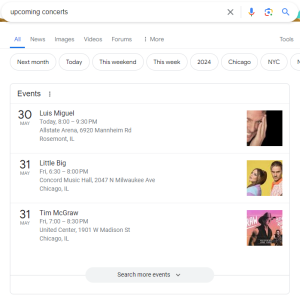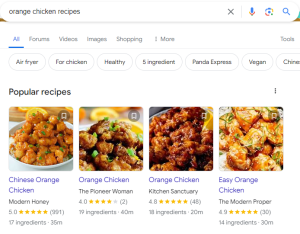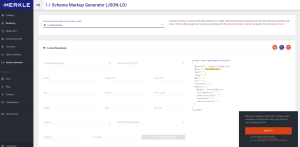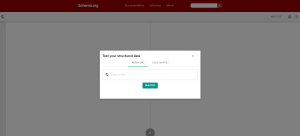SEO Rich Text and Rich Snippets for SEO Beginners: What You Need to Know
Learn how to optimize your website with seo rich text and rich snippets in this beginner-friendly SEO guide. Discover key elements, practical tips, and real-life examples to boost your search engine rankings and enhance user engagement. Start mastering SEO today!
What is Rich Text?
Definition and Explanation: Rich text refers to formatted text that includes various elements such as headings, bullet points, bold and italic styles, images, and hyperlinks. Unlike plain text, which has no formatting, rich text enhances the visual appeal and organization of content, making it more engaging and easier to read.
SEO Rich Text: In the context of SEO, rich text is optimized to improve visibility and ranking in search engine results pages (SERPs). This involves incorporating relevant keywords, meta tags, and structured data to help search engines understand and interpret the content on web pages effectively.
Components of Rich Text:
- Headings and Subheadings: Organized text using H1, H2, H3 tags to structure content. For example, an H1 tag might be used for “The Benefits of SEO” and an H2 tag for subtopics like “Improved Visibility.”
- Lists: Bullet points and numbered lists enhance readability. For instance, listing SEO strategies as bullet points:
- Keyword Research
- On-Page Optimization
- Link Building
- Bold and Italics: Important information can be emphasized using bold or italics. For example, critical terms can be bolded, and key phrases can be italicized.
- Images and Multimedia: Visual content such as infographics and videos can make the information more engaging. For instance, an infographic showing SEO trends can be included.
- Hyperlinks: These connect to additional resources and information, such as linking to related articles or internal pages.
Importance in SEO
How Rich Text Improves Readability and User Experience: Rich text makes content more visually appealing and easier to read. The use of headings, bullet points, and bold text helps break down information into manageable sections, enhancing user experience and engagement. For example, a blog post with clear headings and bullet points is more user-friendly compared to a block of unformatted text. Images and multimedia elements further support the content, making it more informative and enjoyable.
Impact on Search Engine Rankings: Search engines prioritize content that provides a good user experience. Well-structured rich text signals to search engines that the content is organized and valuable. Using headings and subheadings helps search engines understand the hierarchy and main points of the content, improving the chances of ranking higher in SERPs. Additionally, multimedia elements can increase the time users spend on a page, reducing bounce rates and positively influencing SEO.
Plain Text
Understanding SEO
Search engine optimization (SEO) is the process of improving the quality and quantity of website traffic to a website or a web page from search engines. SEO targets unpaid traffic rather than direct traffic or paid traffic. Unpaid traffic may originate from different kinds of searches, including image search, video search, academic search, news search, and industry-specific vertical search engines.
Rich Text
Understanding SEO
Search engine optimization (SEO) is the process of improving the quality and quantity of website traffic to a website or a web page from search engines. SEO targets unpaid traffic rather than direct traffic or paid traffic.
- Unpaid traffic may originate from different kinds of searches, including:
- Image search
- Video search
- Academic search
- News search
- Industry-specific vertical search engines
Key Elements of Rich Text
Headings and Subheadings: Using headings and subheadings helps to structure your content effectively. Headings (H1, H2, H3, etc.) break down content into sections, making it easier for readers to navigate and understand. For example, an H1 tag might be used for the main title, “The Importance of SEO,” while H2 tags can be used for subtopics like “On-Page SEO” and “Off-Page SEO.”
Lists and Bullet Points: Lists and bullet points enhance readability by breaking down complex information into easily digestible chunks. For instance, when explaining SEO strategies, you might use bullet points to list:
- Keyword Research
- On-Page Optimization
- Link Building
Bold and Italics: Bold and italic text can be used to emphasize important information. For example, key terms can be bolded to stand out, while important phrases can be italicized for emphasis.
Images and Multimedia: Including images and multimedia elements such as infographics, videos, and charts can significantly enhance the user experience. For example, an infographic that illustrates the process of keyword research can make the concept more understandable and engaging for readers.
Hyperlinks: Hyperlinks are crucial for SEO as they connect to additional resources and information. For instance, linking to authoritative articles or internal pages can provide readers with further reading material and improve your site’s SEO by creating a network of related content.
Examples in Context
- Headings and Subheadings: In a blog post about SEO, use an H1 for the main topic, H2 for major sections, and H3 for subsections. Example:
- H1: “The Importance of SEO”
- H2: “On-Page SEO”
- H3: “Optimizing Meta Tags”
- Lists and Bullet Points: When listing the benefits of SEO, use bullet points:
- Increases website traffic
- Improves search engine ranking
- Enhances user experience
- Bold and Italics: To emphasize crucial points, use bold and italics:
- Quality content is essential for SEO.
- Always conduct thorough keyword research.
- Images and Multimedia: Add visuals like an infographic showing “Steps to Optimize On-Page SEO.”
- Hyperlinks: Link to relevant resources:
- For more details, visit Moz’s Guide to SEO.
Importance in SEO
Using these elements not only makes your content more engaging but also improves your SEO. Search engines favor content that is well-structured and user-friendly. Proper use of headings, lists, and multimedia elements signals to search engines that your content is organized and valuable, which can lead to higher rankings in SERPs.
What Are Rich Snippets?
Definition and Explanation: Rich snippets are enhanced search results that provide additional information about a web page’s content directly in the search engine results pages (SERPs). They display extra data, such as ratings, reviews, images, and more, which makes the search result more attractive and informative to users.
Types of Rich Snippets:
- Review Snippets: Show star ratings and review summaries. For example, a search result for a restaurant might display a 4.5-star rating with user reviews.
- Recipe Snippets: Include information like cooking time, ingredients, and ratings. For example, a search result for a chocolate cake recipe might display cooking time and a list of key ingredients.
- Event Snippets: Display details about upcoming events, such as dates, locations, and ticket prices. For example, a search result for a music concert might show the event date, venue, and ticket prices.
- Product Snippets: Include product information like price, availability, and reviews. For example, a search result for a smartphone might display its price, availability, and user ratings.
How They Appear in Search Results
Rich snippets appear in SERPs with additional information that enhances the basic search result. They can include various elements such as:
- Images: Visuals of the product or content.
- Ratings: Star ratings and review counts.
- Additional Info: Key details like cooking times for recipes or event dates.
For instance, a search for “best SEO tools” might show a rich snippet with a list of tools, star ratings, and brief descriptions, making the result more appealing and likely to get clicks.
Impact on Click-Through Rates (CTR) and User Engagement
Rich snippets significantly impact CTR by making search results stand out. Users are more likely to click on a search result that provides additional, useful information at a glance. Enhanced search results with rich snippets are more engaging, which can lead to higher user satisfaction and increased traffic to your website.


Types of Rich Snippets
Rich snippets come in various forms, each designed to provide specific types of information directly in the search results. Understanding these types can help you implement them effectively on your website.
Review Snippets: Review snippets display star ratings and review summaries directly in the search results. For example, a search result for a restaurant might show a 4.5-star rating with a brief summary of user reviews. These snippets help users quickly assess the quality of the product or service.
Recipe Snippets: Recipe snippets include detailed information such as cooking time, ingredients, and ratings. For instance, a search result for a chocolate cake recipe might display the preparation time, a list of ingredients, and user ratings. This information makes it easier for users to find and follow recipes.
Event Snippets: Event snippets provide details about upcoming events, including dates, locations, and ticket prices. For example, a search result for a music concert might show the event date, venue, and ticket prices, making it convenient for users to plan their attendance.
Product Snippets: Product snippets include key product information such as price, availability, and user reviews. For example, a search result for a smartphone might display its price, stock status, and customer ratings. This helps users make informed purchasing decisions.
How to Implement Rich Snippets
Implementing rich snippets involves using structured data markup, such as schema.org, to provide search engines with additional information about your content. Here are the steps to follow:
- Choose the Right Schema Markup: Select the appropriate schema type based on the content (e.g., Product, Recipe, Event).
- Add Structured Data to Your HTML: Insert the schema markup into your web pages’ HTML code.
- Test Your Markup: Use tools like Google’s Rich Results Test to ensure your structured data is correctly implemented and recognized by search engines.
How to Implement Rich Snippets
Using Schema Markup: Implementing rich snippets on your website involves using structured data markup, such as schema.org, to provide search engines with additional information about your content. Here’s a step-by-step guide to help you get started:
1. Choose the Right Schema Markup: Select the appropriate schema type based on the content you want to mark up. Some common types include:
- Product: For products, include information like price, availability, and reviews.
- Recipe: For recipes, include cooking time, ingredients, and ratings.
- Event: For events, include dates, locations, and ticket prices.
- Review: For reviews, include star ratings and review summaries.
2. Add Structured Data to Your HTML: Insert the schema markup into your web pages’ HTML code. Here’s an example of JSON-LD markup for a product snippet:
<script type="application/ld+json">
{
"@context": "https://schema.org/",
"@type": "Product",
"name": "Smartphone XYZ",
"image": "https://webwisespot.com/wp-content/uploads/2024/05/pexels-pixabay-40185.jpg",
"description": "The latest smartphone with advanced features.",
"sku": "0446310786",
"mpn": "925872",
"brand": {
"@type": "Thing",
"name": "BrandName"
},
"review": {
"@type": "Review",
"reviewRating": {
"@type": "Rating",
"ratingValue": "4",
"bestRating": "5"
},
"author": {
"@type": "Person",
"name": "John Doe"
}
},
"offers": {
"@type": "Offer",
"url": "https://example.com/product",
"priceCurrency": "USD",
"price": "699.00",
"priceValidUntil": "2024-11-05",
"itemCondition": "https://schema.org/NewCondition",
"availability": "https://schema.org/InStock"
}
}
</script>3. Use Schema Markup Generators: To simplify the process, you can use schema markup generators. These tools allow you to create any type of schema markup easily without manually writing the code. Popular tools include Google’s Structured Data Markup Helper and Schema markup generator.
4. Test Your Markup: Use tools like Google’s Rich Results Test to ensure your structured data is correctly implemented and recognized by search engines. This tool helps you validate your markup and troubleshoot any issues.
5. Monitor and Adjust: After implementing rich snippets, monitor their performance using Google Search Console. Analyze how they impact your CTR and make adjustments as necessary to optimize their effectiveness.
Example: The Google Rich Results Test is a valuable tool for checking your schema markup. By using the schema markup mentioned in section 2, you can validate the structured data and see how it will appear in search results. The screenshot below demonstrates the successful validation of this schema markup, confirming that the data is correctly interpreted and ready to enhance your search results.

Common Mistakes and How to Avoid Them
Overloading Keywords: One common mistake is keyword stuffing, which involves overusing keywords in an attempt to manipulate search rankings. This can lead to penalties from search engines. Instead, focus on natural keyword integration. For example, use synonyms and related terms to maintain keyword relevance without overloading.
Ignoring Schema Markup Best Practices: Improper implementation of schema markup can lead to errors and missed opportunities for rich snippets. Always ensure your schema markup is correctly formatted and adheres to best practices. Tools like Google’s Structured Data Markup Helper can assist in creating and validating your markup.
Neglecting Mobile Optimization: With the increasing use of mobile devices, neglecting mobile optimization can hurt your SEO efforts. Ensure your rich snippets and overall website are mobile-friendly. This includes responsive design, fast loading times, and mobile-specific schema markup where applicable.
Using Outdated Markup: Schema markup evolves, and using outdated types can render your efforts ineffective. Stay updated with the latest schema types and recommendations from schema.org and search engine guidelines.
Lack of Testing: Failing to test your markup can lead to implementation errors. Regularly use tools like Google’s Rich Results Test and Search Console to validate your structured data and monitor its performance.
Examples of Effective Rich Snippets
Case Studies: Analyzing websites that successfully use rich snippets can provide valuable insights. For example, a leading e-commerce site might use product snippets to display ratings, prices, and availability directly in search results, significantly boosting their CTR. Another case might involve a recipe blog using rich snippets to show cooking times, ingredients, and ratings, making their results more appealing to users.
Code Examples: Here are a few practical examples of how to implement different types of rich snippets using schema markup:
Review Snippet:
<script type="application/ld+json">
{
"@context": "https://schema.org/",
"@type": "Review",
"itemReviewed": {
"@type": "Restaurant",
"name": "The Gourmet Kitchen"
},
"author": {
"@type": "Person",
"name": "Jane Doe"
},
"reviewRating": {
"@type": "Rating",
"ratingValue": "4",
"bestRating": "5"
},
"reviewBody": "Excellent food and great service."
}
</script>Recipe Snippet:
<script type="application/ld+json">
{
"@context": "https://schema.org/",
"@type": "Recipe",
"name": "Chocolate Cake",
"image": "https://example.com/photos/chocolate_cake.jpg",
"author": {
"@type": "Person",
"name": "John Smith"
},
"cookTime": "PT30M",
"recipeIngredient": ["200g sugar", "100g butter", "2 eggs"],
"recipeInstructions": "Mix all ingredients and bake at 350 degrees for 30 minutes."
}
</script>These examples demonstrate how to structure your data to enable rich snippets, making your content more attractive and informative in search results.

Tools and Resources
Tools for Creating and Testing Rich Snippets: To effectively create and test rich snippets, several tools can help you generate and validate your schema markup:
Google’s Structured Data Markup Helper: This tool assists in creating structured data markup for various types of content. It simplifies the process by allowing you to tag elements on your web pages visually.
Schema Markup Generator: This generator helps you create schema markup for different types of content, ensuring that you use the correct schema types and properties.
Google’s Rich Results Test: After implementing your structured data, use this tool to test your markup and ensure it is correctly recognized by Google. It helps you identify and fix any errors in your structured data.
Schema.org Validator: This tool checks the validity of your schema markup against schema.org standards. It ensures that your structured data is correctly formatted and can be understood by search engines.
Further Reading and Learning
- Moz’s Guide to Schema Markup: A comprehensive guide that covers everything you need to know about schema markup.
- Yoast SEO Blog: Regular updates and tips on using schema markup and other SEO strategies.
- Google Search Central: Official documentation and best practices for implementing structured data.



Conclusion
Key Takeaways:
- Rich Text: Enhances readability and user experience with headings, lists, and multimedia.
- Rich Snippets: Increases click-through rates by displaying additional information like reviews and ratings in search results.
- SEO Impact: Properly implemented rich text and snippets can improve search engine rankings and user engagement.
- User Engagement: Rich text and snippets make content more engaging and visually appealing, leading to longer page visits.
- Tools and Resources: Utilize tools like Google’s Structured Data Markup Helper, Schema.org Validator, and Google’s Rich Results Test for effective implementation.
Incorporating rich text and rich snippets into your SEO strategy is essential for modern digital marketing. These elements not only make your content more appealing but also signal its value to search engines. Proper use of rich text can structure your content effectively, while rich snippets can provide additional context and attract more clicks.
Using tools like Google’s Structured Data Markup Helper and Schema.org Validator ensures your structured data is accurate and functional. Start optimizing your content today to see improved search engine rankings and user engagement.